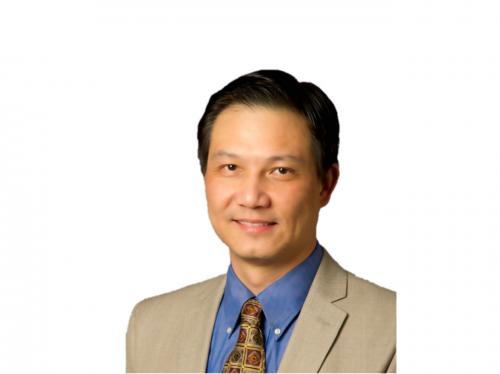Faculty

Biography
Chair Professor Jian Lin, an internationally renowned geophysicist, member of European Academy of Sciences,member of Academia Europaea,member of Russian Academy of Natural Sciences,has made fundamental contributions to global ocean sciences and earthquake research. He led and engaged extensively in international ocean sciences as a Senior Scientist at the Woods Hole Oceanographic Institution (WHOI), a faculty member of the Massachusetts Institute of Technology (MIT)/WHOI Joint Program in Oceanography, and a Distinguished Research Fellow of the South China Sea Institute of Oceanology, Chinese Academy of Sciences. He was elected a Fellow of American Geophysical Union (AGU); Fellow of Geological Society of America (GSA); Fellow of American Association for the Advancement of Science (AAAS); Henry Bigelow Chair Award for Excellence in Oceanography; and Culpeper Young Scientist Award. Prof. Lin is a leading scientist in global oceanic plate tectonics and dynamics, pioneering influential research on mid-ocean ridges, hotspots, subduction zones, and tsunamis. He led as chief-scientist and geophysicist in more than twenty international oceanographic expeditions to the Pacific, Indian, and Atlantic oceans, as well as marginal seas, including four ocean drilling expeditions in the South China Sea; the first high-resolution seismic experiment across the deepest ocean basin - Challenger Deep of the Mariana Trench; discovery of the first hydrothermal vent systems on the southwest Indian Ridge; and multi-disciplinary study of the Makran Trench in the northern Indian ocean. Prof. Lin is also known for his influential work on earthquake interaction, and served on the U.S. National Academy of Sciences committee on tsunami warning system. He had published a series of papers in top international journals such as Nature and Science, one of his earthquake research papers was ranked by the Institute of Scientific Information (ISI) as the most-cited paper in a decade.
Educational background
B.S., Geophysics. University of Science and Technology of China, 1982.
M.S., Geophysics. Brown University, 1984.
Ph.D., Geophysics. Brown University, 1988.
Honors and Awards
Member, European Academy of Sciences
Member,Academia Europaea
Member,Russian Academy of Natural Sciences
Fellow, American Geophysical Union (AGU)
Fellow, American Association for the Advancement of Science (AAAS)
Fellow, Geological Society of America (GSA)
Henry Bigelow Chair for Excellence in Oceanography
International Ocean Discovery Program Distinguished Lecturer
Distinguished Scholar Scheme, Chinese University of Hong Kong
Charles E. Culpeper Young Scientist Award
Publications
Selected publications:
T. Zheng., J. Lin, H. Schouten, D.K. Smith, E. Klein, R. Parnell-Turner, Gravity Anomalies and Implications for Shallow Mantle Processes of the Western Cocos-Nazca Spreading Center, Geophysical Research Letters, 50, 2023.
Wang, Z., and J. Lin, Role of fluids and seamount subduction in interplate coupling and the mechanism of the 2021 Mw 7.1 Fukushima-Oki earthquake, Japan. Earth and Planetary Science Letters, 584, 117439, 2022.
Zhang, F., J. Lin, Z. Zhou, H. Yang, and J.P. Morgan, Mechanism of progressive broad deformation from oceanic transform valley to off-transform faulting and rifting, The Innovation, 3, 100193, 2022.
Tao C. et al., Deep high-temperature hydrothermal circulation in a detachment faulting system on the ultra-slow spreading ridge, Nature Comm., 11, 1300, 2020.
Ding, M., J. Lin, C. Gu, Q. Huang, and M.T. Zuber, Variations in Martian lithospheric strength based on gravity/topography analysis, J. Geophys. Res. - Planets, 124, 3095-3118, 2019.
Lin, J., Y. Xu, Z. Sun, and Z. Zhou, Mantle upwelling beneath the South China Sea and links to surrounding subduction systems, Nat. Sci. Rev., 6, 877-881, 2019.
Park, S.H., et al., An isotopically distinct Zealandia–Antarctic mantle domain in the Southern Ocean, Nature Geosci., 12, 206-214, 2019.
Wan, K., J. Lin, et al., Deep seismic structure across the southernmost Mariana Trench: Implications for arc rifting and plate hydration, J. Geophys. Res., 124, 4710-4727, 2019.
Larsen, H.C., et al., Rapid transition from continental breakup to oceanic crust at South China Sea rifted margin, Nature Geosci., 11, 782-789, 2018.
Ding, M., and J. Lin, Deformation and faulting of subduction overriding plate caused by a subducted seamount, Geophys. Res. Lett., 43, 8936-8944, 2016.
Tao, C., J. Lin, et al., First active hydrothermal vents on an ultraslow spreading center: Southwest Indian Ridge, Geology, 40, 47-50, 2012.
Lin, J., R.S. Stein, et al., Stress transfer among en echelon and opposing thrust and tear faults: Triggering caused by the 2003 Mw=6.9 Zemmouri, Algeria, earthquake, J. Geophys. Res., 116, B03305, 2011.
Gregg, P.M., J. Lin, M. Behn, and L.G.J. Montesi, Spreading rate dependence of gravity anomalies along oceanic transform faults, Nature, 448, 183-187, 2007.
Lin, J., and R.S. Stein, Stress triggering in thrust and subduction earthquakes, and stress interaction between the southern San Andreas and nearby thrust and strike-slip faults, J. Geophys. Res., 109, B02303, 2004.
Dick, H.J.B., J. Lin, and H. Schouten, An ultraslow-spreading class of ocean ridge, Nature, 426, 405-412, 2003.
Freed, A.M., and J. Lin, Delayed triggering of the 1999 Hector Mine earthquake by viscoelastic stress transfer, Nature, 411, 180-183, 2001.
King, G.C.P., R.S. Stein, and J. Lin, Static stress changes and the triggering of earthquakes, Bull. Seismol. Soc. Amer., 84, 935-953, 1994.
Stein, R.S., G.C.P. King, and J. Lin, Stress triggering of the 1994 Northridge earthquake by its predecessors, Science, 265, 1432-1435, 1994.
Stein, R.S., G.C.P. King, and J. Lin, Change in failure stress on the southern San Andreas fault system caused by the 1992 M=7.4 Landers earthquake, Science, 256, 1928-1932, 1992.
Lin, J., G.M. Purdy, H. Schouten, J.-C. Sempere, and C. Zervas, Evidence from gravity data for focused magmatic accretion along the Mid-Atlantic Ridge, Nature, 344, 627-632, 1990.


